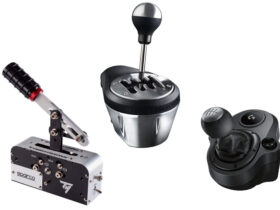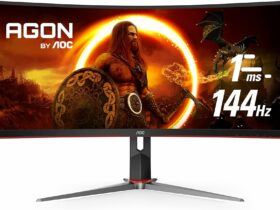This monthly guide to buying a SSD for PC Dekstop will not be divided by price ranges but by categories, based on the final use. In each category we will show you the best SSDs according to your budget
Having an SSD (solid state drive) is now a must on a gaming PC and beyond. With the operating system and applications installed on an SSD, Windows (or whoever it is) will boot up in seconds and applications before you can blink. The whole system will be faster and more performing and this will make the use of the PC faster and more pleasant. Once you have experienced the thrill of owning an SSD you will never go back, but for sure.
In-game SSDs matter, but not on the framerate as much as on the loading and installation times. To understand, in a game like Battlefield 1 the disc can reduce map loading times by 80 seconds, and the respawn will certainly be faster. The overall experience will be smoother and tainted by less downtime.
However they exist two negative aspects compared to classic mechanical discs, mostly negligible. It is worth mentioning the prices which are still quite high for the same capacity, although in constant decline. And the write limits: SSDs have a sort of “expiration” that does not allow more than many writes on them. But these are limits that are difficult to reach by making a standard use.
First some fundamental notion for the choice and then off with the list of best SSD for PC available on the market.
How do you choose the best SSD to buy?
To choose the best solution among those proposed by the SSD disk market, you need to become familiar with some technical parameters. Let’s find out what these parameters are and what are the aspects that weigh the most in choosing the best SSDs available.
Format and type of connection
The majority of SSD disks for notebooks and desktop PCs are in 2.5 “format and are installed in the computer via the classic SATA connectors. Before buying an SSD, find out about the type of connection available on your PC.
- SATA 2: performance stops at theoretical 3 Gbps;
- SATA 3: the data transfer speed reaches up to theoretical 6 Gbps;
- SATA Express: merges SATA infrastructure with PCI Express interface (on supported motherboards only). Data transfer rates up to 10 Gbit / s or theoretical 16Gbit / s;
- mSATA: it is used on some models of ultrabooks and mini-PCs. Same performance as SATA 3 systems;
- M.2: it is mostly used in ultrabooks and convertible tablets, but today it is also the benchmark in high-performance desktop PCs. M.2 can be used for PCI-Express SSDs (the fastest on the market) and SATA SSDs. In the first case it ensures performance up to theoretical 32 Gbps, in the second up to theoretical 16Gbps.
Performance
SSD performance is measured using two main parameters:
- sequential read and write speeds, expressed in MB / s or in GB / s. They indicate the theoretical speeds reached in reading and writing data sequentially.
- 4k random read and write speeds, expressed in IOPS. That is, input / output operations per second that, through the random reading and writing of small blocks of data, allow to simulate a real use scenario. This is the most important parameter for choosing one SSD rather than another.
These are the most significant parameters to choose an SSD, and obviously, the higher these values are, the greater the possible performance. In addition to these it is also good to check:
- the value ofMTBF (ie the average time between failures), which represents a reliability parameter that is expressed in millions of hours;
- the amount of cache memory used;
- support for technologies TRIM, S.M.A.R.T. ed NCQ.
The command TRIM
It allows an operating system to indicate blocks that are no longer in use on a solid state drive (or “SSD”), such as blocks freed after deleting one or more files. Generally in the deletion operation performed by an Operating System (OS) the data blocks are marked as not in use. TRIM allows the OS to pass this information to the SSD controller, which otherwise would not be able to know which blocks to clear.
S.M.A.R.T (Self-Monitoring, Analysis and Reporting Technology)
It is a monitoring system for computer hard drives. It provides various reliability indicators through which it is possible to anticipate any malfunctions. The purpose of this technology is to warn us before the hard drive fails and irreparably damages our data.
Native Command Queuing (NCQ) e Advanced Host Controller Interface (AHCI)
It is a technology designed to increase the performance of hard drives. It allows the hard disk to identify the order in which it received the reading commands and to optimize their temporal execution. For NCQ to be enabled, it must be supported and enabled in the motherboard BIOS. Many newer chipsets support Advanced Host Controller Interface (AHCI), which allows a generic driver provided by the operating system to check the disk and activate NCQ (similar speech for Intel Rapid Technology and similar solutions).
Storage capacity
Like mechanical hard drives, SSDs are also available in different “sizes”. To completely replace a mechanical hard disk, a disk of at least 256 / 512GB is recommended. If, on the other hand, you want to combine a mechanical disk with an SSD on which to keep only the operating system, the programs and the files you use most frequently, you can also choose 120GB drives.
Duration and warranty
Other important parameters that must be considered are those relating to the life cycle of the SSD and the duration of the warranty. As mentioned above, solid state drives have some sort of expiration date related to the number of supported writes. The manufacturers indicate this “expiration” with a period of time, expressed in millions of hours, after which the correct functioning of the disc is no longer guaranteed. Regarding the warranty, it is generally 3 or 5 years but in high-end products it even reaches 10 years.
The list of the best SSDs for PC
The SSD market sees a multitude of very similar proposals. Prices typically fluctuate within a few days or weeks.
No major news in the last month, also thanks to it the increase in prices due to NAND memory deficiency.
Let’s find out the updated list of the best PC SSDs available on the market.
Best 120GB SSDs
Best SSD M.2 PCI Express 128GB
Best SSD from 240 – 256GB
Best SSD M.2 PCI Express 256GB
Best SSDs from 480 – 525 GB
Best M.2 PCI Express 512GB SSD
Best 1TB SSD
Best SSD M.2 PCI Express 1TB
Best 2TB SSDs
Best M.2 PCI Express 2TB SSD
Best 4TB SSDs
Best PC SSDs to buy, see you next month!
Hope this buying guide of the best SSDs has been helpful and remember that it will be updated monthly. For any doubts or suggestions, I invite you to use the comments box below.
PS: remember to also choose one of the best CPUs and one of the best video cards for get the best out of your hardware configuration.















